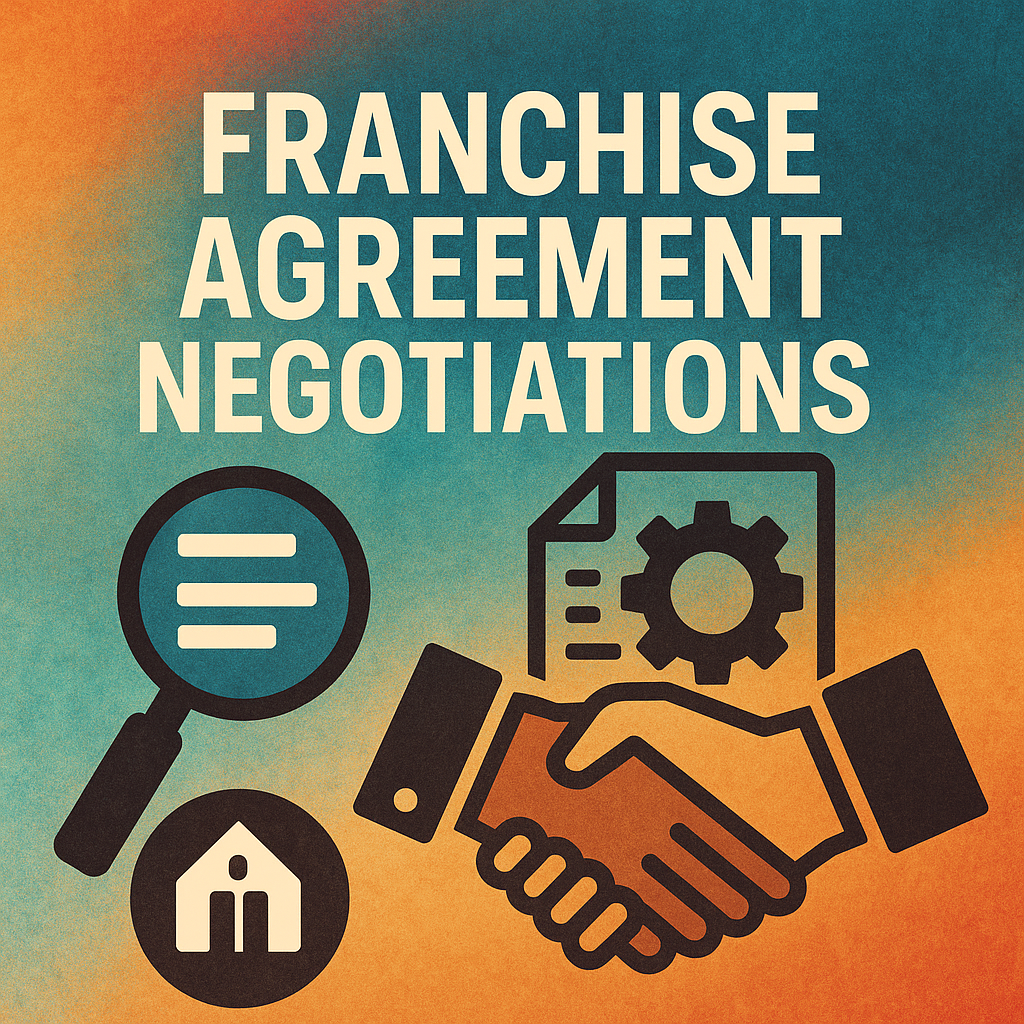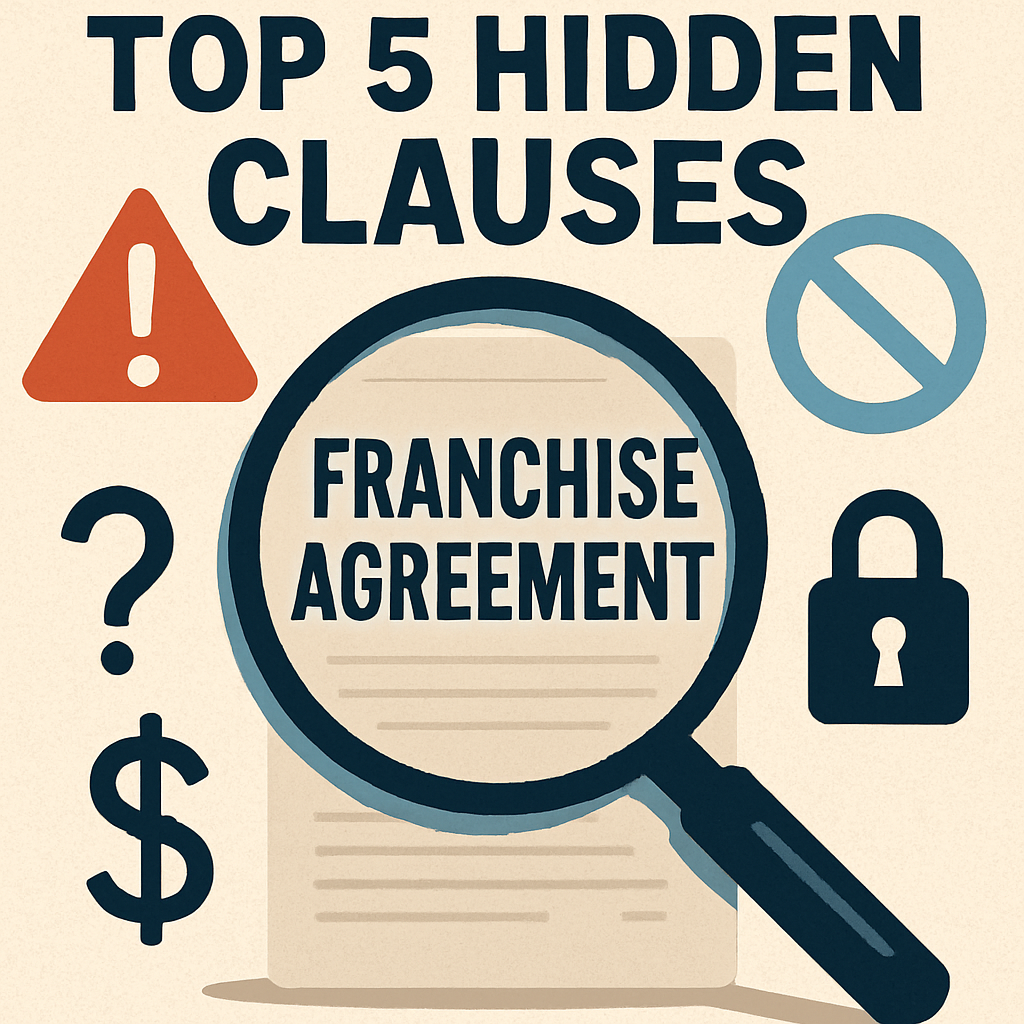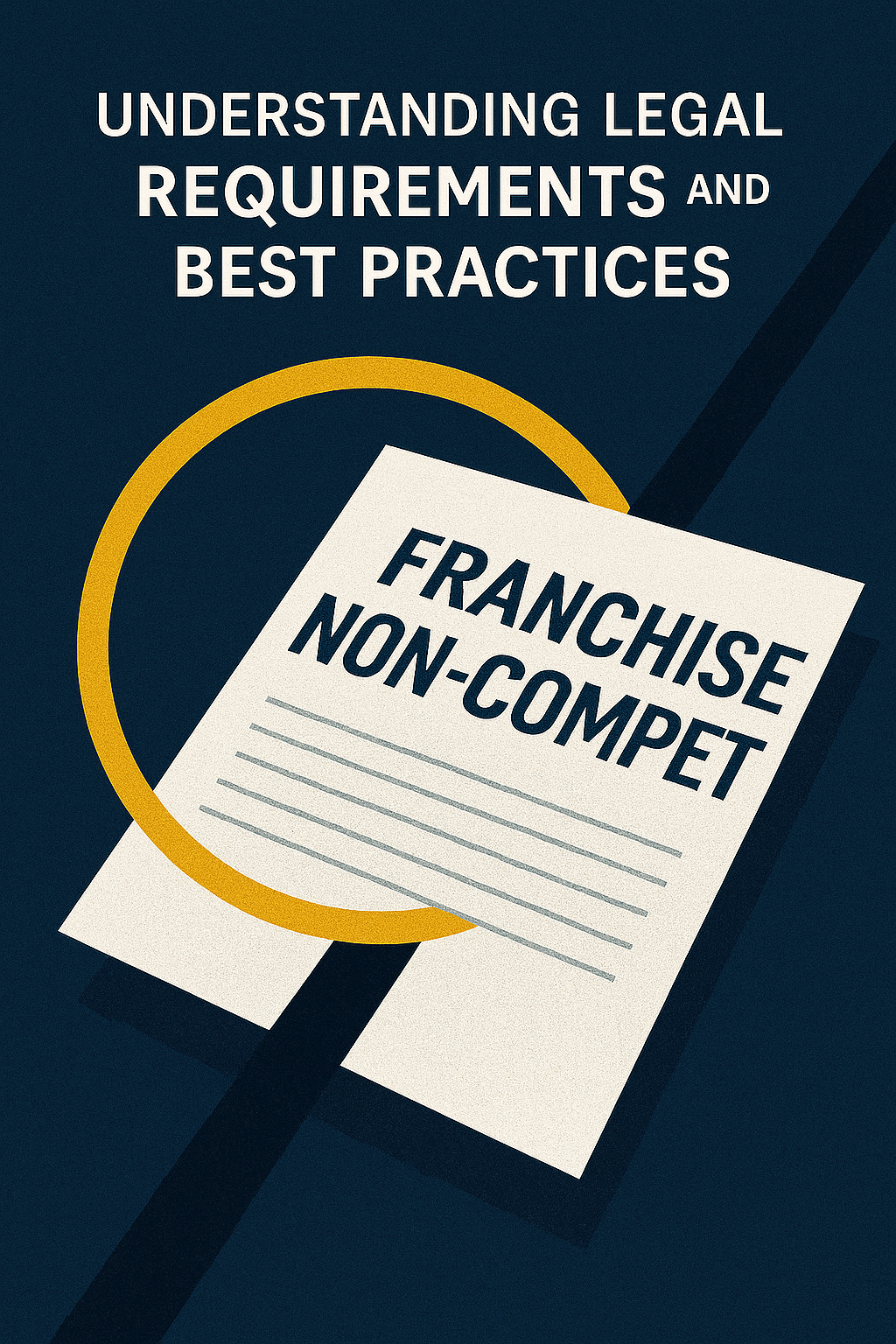Considering a food franchise? Grasping the financial commitment, decoding the Franchise Disclosure Document, and mastering day-to-day operations are just the beginnings of “food franchises what to know.” This savvy guide cuts through the fluff, serving up the critical information you need for making informed choices in the profitable, yet demanding world of food franchises. Get ready to explore the key ingredients of successful franchising without the sales pitch.
Key Takeaways
Food franchises like McDonald’s benefit from strong brand recognition, driving customer loyalty and providing franchisees with a built-in customer base.
A food franchise’s success requires understanding financial commitments outlined in the Franchise Disclosure Document, benefiting from collective buying power, and selecting optimal locations with high traffic and visibility.
Franchisees must manage day-to-day operations including quality control, leverage training and ongoing support from franchisors, and utilize technology to streamline operations and enhance customer experience.
Decoding the Food Franchise Phenomenon

In the bustling realm of food franchises, echoes of prosperity are as common as the sound of frying in a fast food establishment. This sector is synonymous with heavyweights like McDonald’s or Burger King, which stand for trust and recognition. With revenue from fast service restaurants exceeding $250 billion by 2020 in America alone—and an expected annual growth rate of 2.5%—it’s no wonder that many prospective business owners are keen to join the franchise bandwagon. Our discussion will delve into the world of food franchising, where relatively low initial investments meet the enormous consumer demand within the food industry—a testament highlighted by McDonald’s remarkable statistic that 90% of its global presence is managed through franchises.
The Appeal of Brand Recognition
The key to triumph in the food franchise arena lies in brand recognition. This potent force is what transforms newcomers into devoted customers who look forward to revisiting the reliable flavors and ambiance they have come to rely on. Consider McDonald’s instantly recognizable golden arches or Pizza Hut’s distinctive red roof. These symbols embody a history of consistent quality and customer service that has been developed over many years.
When it comes to franchise opportunities, those backed by substantial brand recognition usually offer an immediate clientele, providing prospective franchisees with a road already primed for success.
Understanding the Franchise Disclosure Document
Prior to launching into a franchising endeavor, it’s crucial for one to meticulously review the Franchise Disclosure Document (FDD). The FDD acts as an essential guidebook outlining every aspect of your partnership with the franchise provider. Included within its pages are:
monetary responsibilities
respective duties and privileges of all involved parties
methods for incorporating intellectual property updates or novel items into your business framework.
Acting as navigational aid, the FDD directs prospective franchisees on a path through the complex terrain of legal obligations and fiscal specifics that come with operating a new franchise.
The Power of Collective Buying
Leveraging the collective buying power within a food franchise is similar to the concept of pack strength found in nature. As a member of a franchise, you are no longer solitary but part of a united group that seeks out optimal deals collectively. This strategy enables each franchisee to take advantage of brandsished by their mass purchasing capacity, which typically translates into reduced costs for materials due to bulk purchase discounts.
Such tactics can significantly enhance the competitive position of any food-based enterprise operating under a franchise model.
Launching Your Franchise Journey

Embarking on a journey in franchising is akin to traversing the volatile currents of the restaurant industry. An initial investment that spans from $200,000 to upwards of $2 million signifies substantial startup costs, yet it also opens up opportunities for considerable gains. Franchisees commit themselves to a proven business model backed by franchisor support while embracing the responsibility of royalty payments.
The excitement associated with launching one’s own restaurant must be balanced with fiscal wisdom, considering market trends and brand standing alongside the tantalizing prospect of owning your very own fast food franchise.
Navigating Franchise Fees and Royalties
Embarking on your franchising venture in the food business comes with financial obligations like the initial franchise fee and continued royalty payments, among other costs. This investment grants you access to a reputable brand and their established business model, signifying an enduring pledge that surpasses just launching your new establishment.
As part of regular operating expenditures for maintaining the franchise, expect to navigate through monthly royalties tied to sales volume—a recurring aspect of owning such a proven enterprise. Grasping this payment framework is essential in steering your food franchise successfully into future growth and stability.
Selecting the Ideal Location
Choosing the perfect real estate for your franchise is akin to finding the ideal picnic spot – it’s pivotal in elevating an experience from average to exceptional. A prime location characterized by:
abundant pedestrian flow
clear visibility from the street
sufficient parking facilities
limited competition in close proximity
Serves as a magnet for drawing in customers, much like a well-situated sunny patch beckons picnickers. This tactical decision focuses not merely on immediate gains, but also foresees nurturing growth and accessing a continual influx of emerging market prospects over time.
Day-to-Day Operations of a Food Franchise Owner

As the proprietor of a food franchise, you act as the conductor of an ensemble that operates from morning to night. Your role extends beyond just the initial financial composition and involves harmonizing continuous expenditures such as employee salaries, leasing fees, and material procurement. You have to meticulously monitor profitability while adjusting your strategies in pursuit of higher revenues and lower outgoings.
Supported by your corporate headquarters with an emphasis on maintaining exceptional food quality and swift service delivery, you will direct a show that echoes with the pulse of the dynamic food industry.
Managing Quality Control and Production
In the culinary spaces of a food franchise, scrupulous quality control forms the basis for its triumph. This rigorous compliance with established food norms transcends preventing overcooked meals. It’s about crafting every dish to perfection, thereby maintaining the esteemed image of the franchise. The protocols in place serve as recipes for uniformity, while surpassing customer anticipations acts as the final flourish.
Tweaking menus to resonate with regional palates or certifying that fries attain that perfect golden hue embodies pivotal aspects of quality management. It’s this unwavering dedication to excellence that ensures customers return eagerly for another helping.
The Role of Training Programs and Ongoing Support
Regard the training programs offered by the franchisor as an essential navigation tool for steering through the vibrant chaos of the restaurant industry. Far more than a basic introduction to food preparation, these comprehensive educational sessions delve into everything that makes up the essence of their particular brand, encompassing both culinary execution and outstanding customer service. Franchisees receive practical knowledge on-site at a designated training location where they are equipped with vital expertise to oversee quality control and handle a dynamic workload.
This support extends beyond initial education. Franchisees continue receiving counsel from their franchisors post-training. This consistent backing is key in maintaining continuous progress and achievement within their individual restaurants, ensuring each franchisee can flourish over time.
Harnessing Technology for Efficiency
In the current rapidly moving society, technology serves as the critical accelerator for food franchises. Utilizing state-of-the-art innovations such as AI-based suggestions and mobile ordering systems helps simplify processes and meets contemporary patrons’ desire for ease. Establishing a strong presence on social media platforms that emphasize visuals, like Instagram, is an effective strategy to attract customers.
Similarly, drive-thru services have emerged as a fundamental feature in fast food restaurants by delivering quick service alongside consumer gratification. The integration of advanced technology goes beyond mere adaptation. It’s about gaining a competitive edge within the bustling restaurant industry.
Evaluating Profitability and Business Performance

Achieving financial success in the food franchise sector is analogous to mastering a classic recipe. It demands a mix of proper elements and precise timing. The gross profit margin for restaurant franchises is around 70% before operating expenses are taken into account, with net profit reflecting what’s left after these costs.
Owners of fast food franchises typically anticipate a profit margin between 5-10%, which can be enhanced by implementing savvy sales strategies, effective marketing, and meticulous expense control. A combination of diligent effort and flexibility allows franchise owners to relish the rewarding flavor of economic victory.
Projecting Potential Profit Margins
Calculating the likely profit margin of a food franchise is akin to understanding a weather forecast—it prepares you for what lies ahead. Profit margins fluctuate based on the restaurant type, with fast-food and casual restaurants often seeing lower margins compared to their fine dining counterparts that benefit from higher menu prices and better cost management.
For any given meal within the franchise, prime costs — those direct expenses — are analogous to temperature readings. They’re crucial indicators affecting your bottom line. It’s essential for franchisees to comprehend these numbers thoroughly in order to align their financial aspirations with current patterns in the restaurant sector.
Balancing Long Hours Against Financial Goals
As a franchise owner, one is engaged in an endurance race rather than a quick dash, characterized by prolonged periods of work and scarcely any breaks. The emphasis lies not merely on hard labor. It encompasses maximizing each service encounter with prompt efficiency reminiscent of finely tuned machinery while simultaneously elevating client satisfaction to its zenith. Achieving this equilibrium is paramount for sustaining the zeal and vigor needed to surpass financial aspirations and guarantee that the considerable dedication of time and energy ultimately yields substantial returns.
The Legal Landscape for Food Franchises

The legal structure encompassing food franchises is complex, consisting of various components like contract law, employment law, intellectual property rights, and consumer protection statutes.
Franchisees need to navigate these intricacies with accuracy to ensure that their business operations are in compliance with both ethical guidelines and statutory requirements. It’s as critical for them to consult a lawyer before entering into a franchise agreement as it is for sailors to don life vests amidst turbulent seas—to avoid potential issues down the line.
Armed with proper advice and comprehension of the required permits and licenses needed for operation, franchisees can embark on their commercial endeavors assuredly.
Crafting a Solid Franchise Agreement
The franchise agreement is the cornerstone of a franchise, detailing the terms, conditions, fees, and renewal standards. It needs to be sufficiently strong to endure across various international legal frameworks and cultural customs so that the franchise can thrive in different marketplaces.
Acting as a navigational chart for both franchisor and franchisee, an expertly designed franchise agreement provides explicit instructions that guide them through their joint enterprise.
Mitigating Risks with Professional Advice
Navigating the complex waters of the restaurant industry as a franchise calls for more than mere enthusiasm. It necessitates the sharp vision of an experienced guide. It is essential for those looking to become franchisees to seek out professional advice and legal counsel in order to comprehend the risks associated with franchising and learn how to avoid possible hazards.
The assistance from a legal authority, especially one who has deep knowledge of laws pertaining to franchises, can shed light on the economic aspects involved in becoming part of a restaurant franchise while ensuring that all parties are abiding by its detailed rules and regulations. Through expert guidance, both franchisors and franchisees are able to creatively collaborate within this dynamic legislative framework that dictates their operations in the food service domain.
Expanding Your Empire: Growth and Scalability
Embarking on the path of a food franchise is not just about launching the business. It’s a continuous pursuit of growth and diversification. Franchise owners with aspirations to cultivate an extensive operation have several strategies at their disposal.
Establishing more locations
Identifying alternative sources of income
Initiating mobile ventures for broader culinary distribution
Selling merchandise linked to their brand
Adding catering options to their portfolio
Organizing special events
These varied paths can invigorate your own business while circumventing the need for additional real estate or significant investments in liquid assets.
Franchisees equipped with effective marketing and promotional tactics can ensure that their brand maintains its appeal, captivating both longstanding patrons and attracting new customers.
When to Consider Opening Additional Outlets
Franchise owners must regard the expansion of their franchise to multiple locations with the same critical timing as one would consider in harvesting crops. Precise timing is crucial. Expansion should only be contemplated once a franchise owner has cultivated their current concept into a fruitful endeavor. Prior to broadening their enterprise, they must evaluate whether they have the capacity to oversee additional growth and ensure that competent managers are available to operate these new establishments.
Expanding into several locations allows for risk distribution across the franchises, offering a buffer wherein if one site struggles, others may sustain it.
Exploring New Market Opportunities
Expanding into new markets can be akin to navigating unknown lands for a food franchise. Teaming up with venues without their own cooking facilities presents an opportunity to introduce the food franchise’s unique dishes to customers who haven’t yet experienced them. Through implementing pop-up stations or introducing varying menus in these places, owners of the franchise have the potential to attract different customer groups, infusing innovative zest into their existing business model.
Real Stories from Successful Franchise Owners
Every prosperous food franchise has a backstory of an entrepreneurial spirit that turned aspirations into tangible success. These stories abound with insights on how to adjust within the framework of a franchise system, handle customer service effectively, and harmonize with the ethos of the food franchise.
These shared experiences provide insight into the dedication and fervor necessary for transitioning from simply owning a food-related franchise to establishing it as an iconic presence in the competitive world of the food industry.
From Novice to Veteran: Franchisee Journeys
Transitioning from a beginner to an experienced franchise owner often involves determination and a willingness to absorb new information. Ray Kroc, for instance, overcame his absence of firsthand experience in the food industry by establishing the McDonald’s empire with steadfast quality norms and the liberty for entrepreneurial innovation. Similarly, Colonel Sanders, despite lacking professional cooking education, developed a chicken recipe that turned into an international sensation.
These giants in the realm of food franchises show that possessing an appropriate mindset coupled with an eagerness to learn can enable anyone to attain triumph in this ever-changing sector.
Overcoming Challenges: Tips from the Front Lines
Gleaning knowledge from franchise owners who have already journeyed through the complexities of franchising can act as a vital support system for individuals embarking on their own franchise ventures. Engaging with other franchise owners opens access to a wealth of practical advice that enables newcomers to sidestep typical hurdles and accelerate their trajectory towards success.
Drawing upon the tried-and-true experiences of seasoned operators offers distinct understanding and assurance, equipping new franchisees with the means to adeptly traverse even the most turbulent aspects of running a franchise with poise and determination.
Summary
From the first spark of interest to the grand opening and beyond, the franchising journey is a blend of passion, strategy, and hard work. It’s a path marked by the allure of brand recognition, the wisdom hidden within the franchise disclosure document, and the collective strength of buying power. With the right location, a robust franchise agreement, and a commitment to quality, training, and technology, success in the food franchise industry is not just possible—it’s within reach. The stories of those who’ve triumphed serve as a beacon, guiding new franchisees towards their own legacy in the world of fast food franchises.
Frequently Asked Questions
What are the typical startup costs for a food franchise?
Initiating a food franchise necessitates an investment between $200,000 and upwards of $2 million. Numerous franchises see startup expenses that lie within the $300,000 to $500,100 spectrum—these costs encompass both the franchise fee and early outlays such as equipment for preparing food.
How important is brand recognition in the success of a food franchise?
The success of a franchise in the food business is heavily dependent on brand recognition. This is evident from renowned brands such as Burger King and Pizza Hut, which benefit from having a devoted clientele that contributes to their thriving franchise operations.
What is the role of the Franchise Disclosure Document?
Prospective franchisees must thoroughly understand the Franchise Disclosure Document (FDD) as it is vital in revealing the legal and financial implications of a franchise, encompassing their responsibilities and entitlements. It offers an exhaustive insight into the franchise opportunity.
Can franchise owners expect support from the franchisor after opening their restaurant?
Certainly, those who own franchises are provided with continual assistance from the franchise provider, which encompasses comprehensive training programs, advice on operations, tactics for marketing, and direct support at their location to promote seamless business activities.
When is the right time to consider opening additional outlets for my franchise?
When your existing franchise concept has demonstrated sustained success over several years and you possess a strong sense of confidence in managing more locations, it is then an appropriate moment to contemplate the launch of additional outlets.
It’s crucial that any plans for growth are meticulously deliberated upon with the objective of ensuring they contribute positively to the long-term prosperity of your business.






